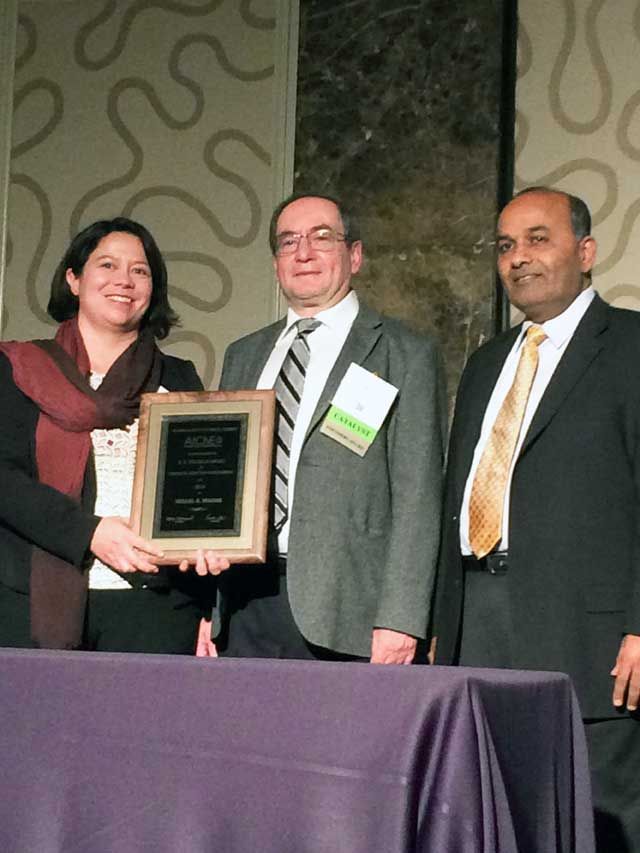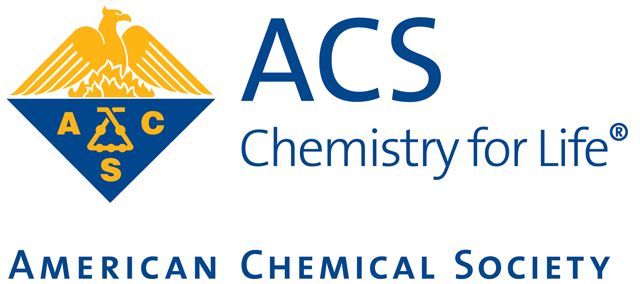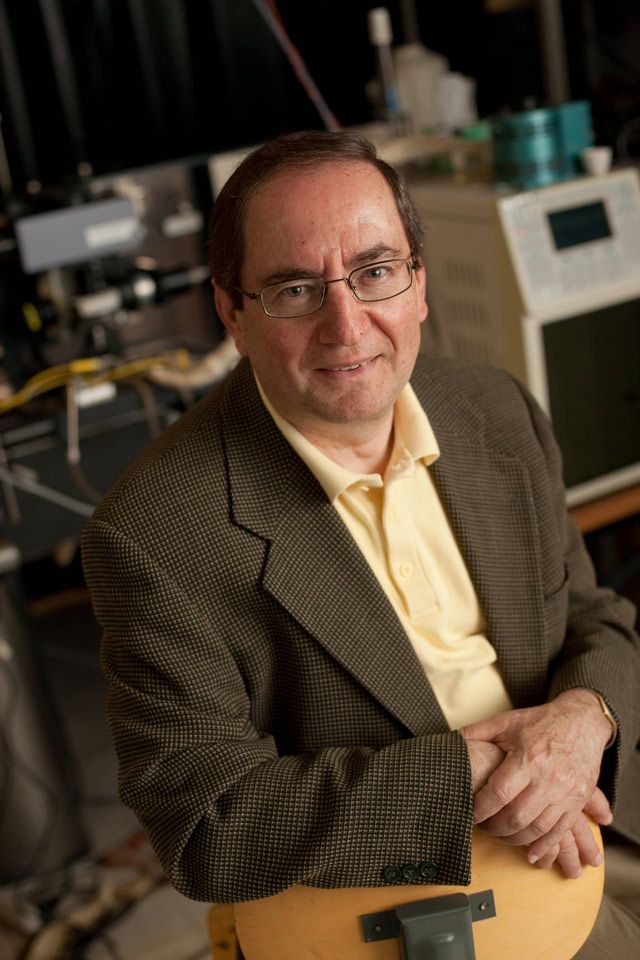Dr. Israel E. Wachs wins major award for research leadership
Dr. Israel E. Wachs, the G. Whitney Snyder Professor of Chemical and Biomolecular Engineering at Lehigh University, has been named as recipient of the AIChE's top award in chemical reaction engineering. Wachs was formally recognized with the R. H. Wilhelm Award at the opening ceremony of the 2016 AIChE Annual Meeting, November 13-18 in San Francisco, CA.
AIChE is the world's leading organization for chemical engineering professionals, with more than 50,000 members from over 100 countries. Its Annual Meeting is the premier forum for chemical engineers interested in cutting edge research, new technologies, and emerging growth areas in chemical engineering.
The director of Lehigh's Operando Molecular Spectroscopy and Catalysis Laboratory, Wachs' contributions over three decades have been integral to the development of cutting edge research, new technologies and emerging growth areas in chemical reaction engineering.
"There can be nothing more central to our profession than reaction engineering," says Mayuresh Kothare, chair of chemical and biomolecular engineering at Lehigh. "Winning the Wilhelm Award is, therefore, a very special moment for our department, and a fitting way to celebrate Israel's 30 years of pioneering accomplishments in this core area of our discipline."
In particular, Dr. Wachs was recognized for "seminal contributions towards development of innovative concepts for molecular chemical reaction engineering of mixed oxide catalyzed reactions by establishing fundamental catalyst molecular structure-activity kinetic relationships."
The R.H. WIlhelm Award is sponsored by ExxonMobil Research & Engineering Company.
Fueling green energy technologies
In one project, Wachs leads a team of researchers from Lehigh and the Stevens Institute of Technology that recently announced major advances in the fundamental understanding of a catalytic reaction that directly converts natural gas into valuable liquid fuels (gasoline, diesel and jet fuel).
Natural gas, the researchers say, is abundant and inexpensive—but terribly underutilized. More than half the world's known reserves are classified as stranded due to high cost of transport or lack of efficient remote processing technologies. Moreover, when an oil well is drilled, natural gas is often flared—burned off—or vented into the atmosphere, where it contributes significantly to global warming. Worldwide, more than 140 billion cubic meters of natural gas are flared or vented every year due to this practice, roughly equivalent to 20% of all the natural gas consumed annually in the United States. And methane, the main component of natural gas, traps about 86 times more heat over a 20-year period than carbon dioxide.
To leverage 'stranded' gas while protecting the environment, new technologies for natural gas conversion are under development. Wachs' team explores the direct conversion of natural gas into liquid aromatic hydrocarbons in a single step without oxidizing reagents. This 'dehydroaromatization' of methane is achieved using catalysts with molybdenum nanostructures supported on shape-selective zeolites. This technology, say the researchers, offers unique advantages over other methane activation chemistries because it does not require the transportation of reagents to remote locations.
The Lehigh-Stevens team believes their published results could help overcome one of the biggest technical obstacles—the rapid deactivation of the molybdenum catalyst. The new technologies will address not only the economic issue of natural gas conversion into liquid fuels and chemical feedstocks but also a significant environmental issue. If the current venting and flaring of natural gas can be eliminated, such a reduction in greenhouse gas emissions will by itself more than meet the requirements of the Kyoto Protocol in the United Nations Framework Convention on Climate Change for all the participating countries combined.
Pioneering innovation
Dr. Wachs' research focuses on the catalysis science of mixed metal oxides (supported metal oxides , bulk metal oxides, polyoxometalates, zeolites and molecular sieves) for numerous catalytic applications (selective oxidation for manufacture of value-added chemicals, environmental catalysis (selective catalytic reduction of NOx and SOx), hydrocarbon conversion by solid acid catalysts for increased fuel energy content, olefin metathesis for on demand production of scarce propylene, olefin polymerization, conversion of methane to liquid aromatic fuels, oxidative coupling of methane to ethylene (the most important intermediate for the chemical industry), biomass pyrolysis for production of liquid fuels, conversion of bioethanol to butadiene for manufacture of green tires (biomass-to-tires), water-gas shift for production of hydrogen and photocatalytic splitting of water for clean hydrogen.
His research aims to identify the catalytic active sites present on the heterogeneous catalyst surface to allow establishment of fundamental structure-activity/selectivity relationships that will guide the rational design of advanced catalysts. The research approach taken by the Wachs group is to simultaneously monitor the surface of the catalyst with spectroscopy under reaction conditions and online analysis of reactant conversion and product selectivity with online GC/mass spectrometer analysis. This new methodology has been termed operandospectroscopy and is allowing for the unprecedented development of molecular level structure-activity/selectivity relationships for catalysts.
The spectroscopic techniques employed by the Wachs group for determination of the catalytic active sites and surface reaction intermediates are Raman, infrared (IR), ultraviolet- visible (UV-vis), X-ray Absorption Spectroscopy (XANES/EXAFS), Nuclear Magnetic Resonance (NMR), Electron Paramagnetic Resonance (EPR) and Temperature Programmed Surface Reaction (TPSR). Isotopic labeling of Deuterium (heavy Hydrogen-2), Oxygen-18, Nitrogen-15 and Carbon-13 is also used to track reaction pathways, ascertain rate-determining-steps, and distinguish between spectator species and actual surface reaction intermediates.
The U.S. Environmental Protection Agency has previously honored Wachs with a Clean Air Excellence Award for his catalytic process that converts paper-mill pollutants into a usable, valuable product—formaldehyde—for manufacture of resins used in particle board. The American Chemical Society (ACS) has granted Wachs its George A. Olah Award for achievements in hydrocarbon and petroleum chemistry, and the American Institute of Chemical Engineering (AIChE) has previously honored Wachs with the Catalysis and Reaction Engineering Division Practice Award. He is also recipient of multiple awards from local catalysis societies in Michigan, New York, Chicago and Philadelphia. In 2011, he was named a Fellow of the American Chemical Society (ACS), the highest honor bestowed by the society. In 2012, he was recognized with a Humboldt Research Award from the Alexander von Humbolt Foundation of Germany, and the Vanadis Award from the International Vanadium Chemistry Organization. Wachs has published more than 300 highly cited technical articles (H index of >90) and holds more than three dozen patents.
-Simona Galant '18 is a writer with the Dean's Office of the P.C. Rossin College of Engineering and Applied Science.



